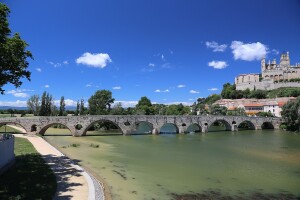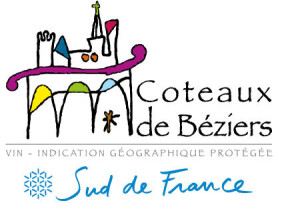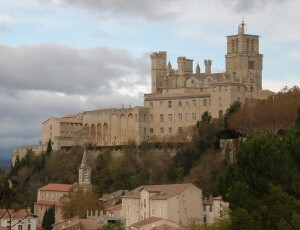The area around the town of Béziers—located just north of the River Orb, about 6 miles (9.5 km) from the Mediterranean Sea in the Hérault Department of southeast France—is known to be one of the oldest cities in France. Believed to have been inhabited since 575 BCE, this sleepy town in the Languedoc has more than its fair share of historic landmarks.
These include the Pont Vieux—a Romanesque stone bridge with asymmetrical arches built in the 13th century—as well as the Saint-Nazaire Cathedral (Béziers Cathedral), built in the 14th century after its predecessor burned down in 1209 CE. The Canal de Midi runs through the town, carried over the Orb River via the Pont-canal de l’Orb (Orb Aqueduct), completed in 1858—and said to be one of the oldest and longest aqueducts on the canal.
The wines produced in and around Béziers have been famous for hundreds (if not thousands) of years; remnants of earthenware wine vessels containing the imprint “white wine of Baeterrae” (the Roman name for the town) have been found in excavations near Rome.
In modern times, the vineyards of the area are produced under the Coteaux de Béziers Indication Géographique Protégée/IGP (Protected Geographical Indication/PGI). The majority of the appellation’s vineyards are located between the Libron River and the River Orb. There are currently around 20,000 hectares (acres) planted to vine as well as over 20 independent wineries and 3 winery co-ops. There is some overlap between the area covered by the Coteaux de Béziers IGP and the Languedoc AOC, although most of the Coteaux de Béziers IGP is tucked into the area surrounding the larger appellation.
The Coteaux de Béziers IGP produces still (non-sparkling) wines in red, white, and rosé. The specifics of the wines are discussed below:
- Red wines: Red wines (either single-varietal or blends) may be produced from a long list of red grapes. Those most commonly used include Grenache, Syrah, Merlot, and Cabernet Sauvignon. The color may range from deep ruby red to garnet/purple. Young wines show aromas of red and black fruits; with time, these may develop into notes of mint, licorice, and spice.
- Rosé: May be produced from a long list of grapes, and are typically produced as blends suing Cinsault, Grenache and Syrah. They are fruity and crisp; and range from pale pink to salmon pink in color.
- White: The white wines may be produced as single-varietal wines or blends. A long list of varieties are allowed for use; those most widely grown include Chardonnay, Sauvignon Blanc, Viognier, Vermentino, Marsanne and Grenache Blanc.
Astute students of wine might be interested in the fact that Coteaux de Béziers IGP is a new title; the name was changed from Coteaux du Libron in December of 2019. The reason for the name change, as stated on the original petition, is as follows: “The geographical reference ‘Libron’ is little known (the Libron is a coastal river in the department of Hérault), and the group wishes to replace it by referring instead to the town of Béziers, which forms part of the geographical area of production.”
References/for more information
- http://www.vin-coteauxdebeziers.org/
- Cahier des Charges – IGP Coteaux de Béziers
- Map IGP_Coteaux de Beziers via INAO
- Request for amendment Cahier des Charges Coteaux du Librond- name change
Post authored by Jane A. Nickles…your blog administrator: jnickles@societyofwineeducators.org


